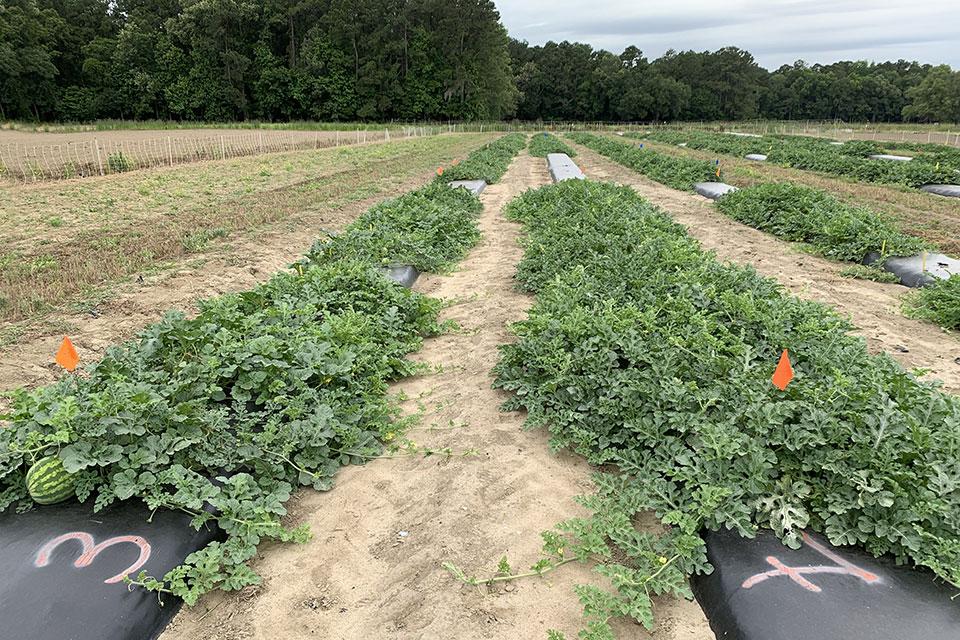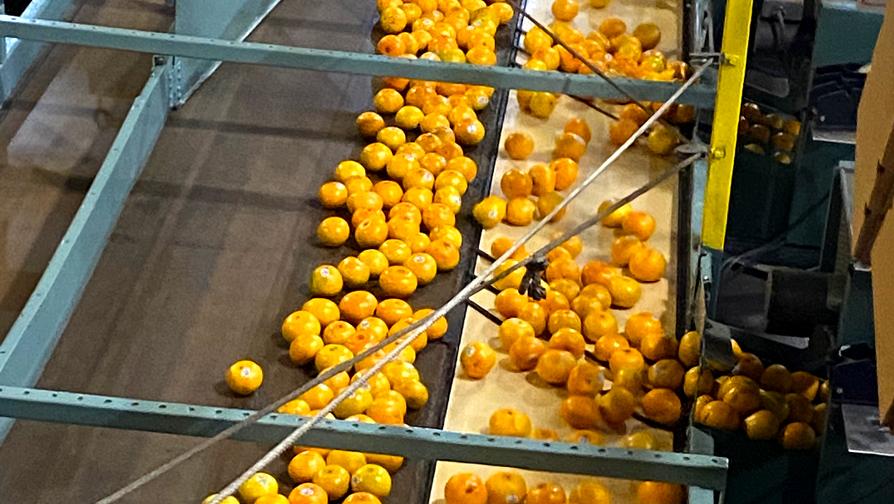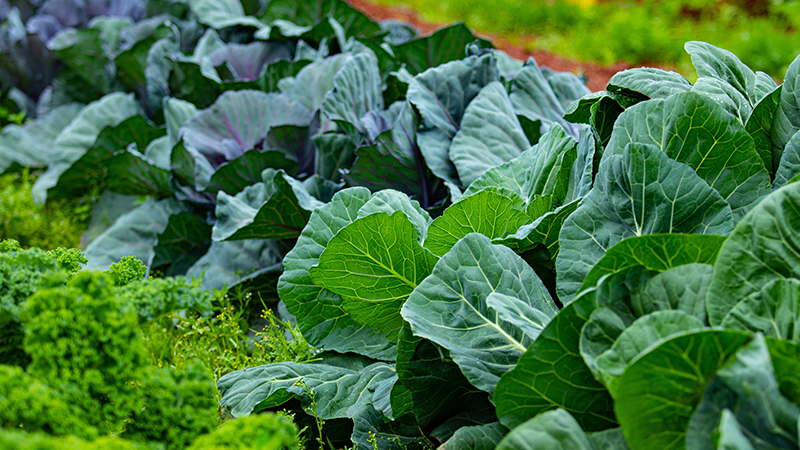Why Grafting Works Best When Fighting Fusarium Wilt on Watermelon
It was good to get out of the office on a warm, but not yet hot, day in early May to check on grafted watermelons on two South Carolina farms. One grower has planted them for six years, while the other grower was trying them for the first time after the widespread, severe outbreak of Fusarium wilt on watermelon in 2023, when yields of my go-to cultivar, ‘Fascination’, were down by two-thirds compared to a normal year.
Fusarium wilt lowers yields of seedless watermelon by reducing fruit size, shifting fruit to the 60-count, or 12-pound, size on cultivars that typically produce 45-count, or 15-pound, fruit. Cultivars that tend to produce small fruit, like ‘Citation’, produce fruit too small to market (less than 10 pounds).
The 2023 epidemic was a wake-up call for many watermelon growers who didn’t realize their fields were infested with Fusarium. Going forward, these fields should be considered infested. At least one management option should be used every year these fields are cropped to watermelon.
Classic IPM
Management of Fusarium wilt of watermelon is one of the best examples of IPM for a vegetable disease because of the unusually large number of management options. Five practices, albeit with different rates of success, can be used, and four are suited to organic production.
Grafting is a stand-alone practice. It’s so effective that it’s not necessary to combine it with any other technique. In the past three years of research, only one of 200 grafted plants had Fusarium wilt in my heavily infested research field.
The other four practices don’t work well enough to pick just one and get adequate control of Fusarium wilt. These techniques work best when combined — the essence of “integrated” disease management.
Cover cropping with hairy vetch or hybrid ‘Cahaba White’ vetch reduces the amount of Fusarium spores in soil if there’s enough biomass and environmental conditions are right to convert the nitrogen in the vetch to ammonia, which is toxic to Fusarium. A disadvantage of using vetch is waiting for it to grow a bit in the spring before disking delays field preparation.
However, I am a big fan of delaying transplanting as long as possible, particularly in fields known to be infested with Fusarium. Soil temperatures above 78 to 81°F at 2- to 4-inch depths reduce the number of diseased plants. Disease starts to lessen when transplants are set after April 10 in South Georgia and Coastal South Carolina. The most infested field should be transplanted last.
Choosing cultivars with resistance to race 1 of Fusarium (abbreviated Fon1 in seed descriptions) helps reduce the number of diseased plants in soils infested with Fusarium race 2, the most common race in the Southeast. In 2021 and 2022, ‘Fascination’, ‘Embassy’, and ‘Eleanor’ performed better than the susceptible check ‘Shoreline’ in trials done in North Carolina and South Carolina in heavily infested soil.
The fifth technique, conventional fungicides, is the one I’m least likely to recommend, because I haven’t seen a consistent response from any of the fungicides I’ve tested, not even early in the season when watermelon roots are mainly in the treated band of soil.

Example of healthy grafted watermelon.
Photo by Anthony P. Keinath
Making the Most of Grafting
Currently, the preferred rootstock for grafted watermelon is Carolina Strongback, a hybridized wild watermelon. This rootstock has excellent resistance to both Fusarium wilt and root-knot nematode and avoids the off-flavor that can occur on fruit produced on squash rootstocks.
Because grafted transplants cost $1.25 apiece more than non-grafted, the preferred way to reduce input costs is to set 1,300 transplants per acre instead of 1,800. This cut also means less plastic mulch and drip tape per acre, as rows for grafted plants are typically 10 to
12 feet apart, rather than 8 to 9 feet.
Seedless fruit tends to be a bit larger on grafted watermelon than on non-grafted. In-row spacing is not reduced with grafted plants, even though they are more vigorous, to keep fruit within the magic 45-count range.
Fruit from grafted plants ripens a week later, and in 2023, this delay was up to two weeks.
Grafting is best viewed as a highly effective disease management option that allows growers to continue to plant watermelon in fields infested with Fusarium.










